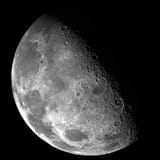Indian Space Progress #27: Three months of mission updates, and fixing ISRO’s monthly summaries
ISRO has been publishing monthly summaries of the varied activities and programs of India’s Department of Space (DOS) for years. Lately though, there have been consistent delays in publishing them by a month or two, and sometimes even more. The summaries have been trimmed too, now conveying less than half the information they once did whereas India is doing more in space than ever before across an increasing number of domains. As it is ISRO doesn’t invest as much in comprehensive public communications via its website and social channels like ESA, NASA or JAXA do. With the last published summary being for February, the final leg of finer, official, public information about India’s space missions is becoming inaccessible for the taxpayers as well as global space enthusiasts.
It’s partly due to such issues that I started writing monthly Indian Space Progress reports over two years ago, compiling and contextualizing our space activities while reflecting on trajectories of key developments. To that end, with this 27th edition, I aim to fill another gap and provide a contextualized overview of the last three months in Indian space. It’s organized by section, and touts links to everything to learn more. If you appreciate my efforts, kindly support as an individual or organization to keep these reports going. 🚀
Mission updates
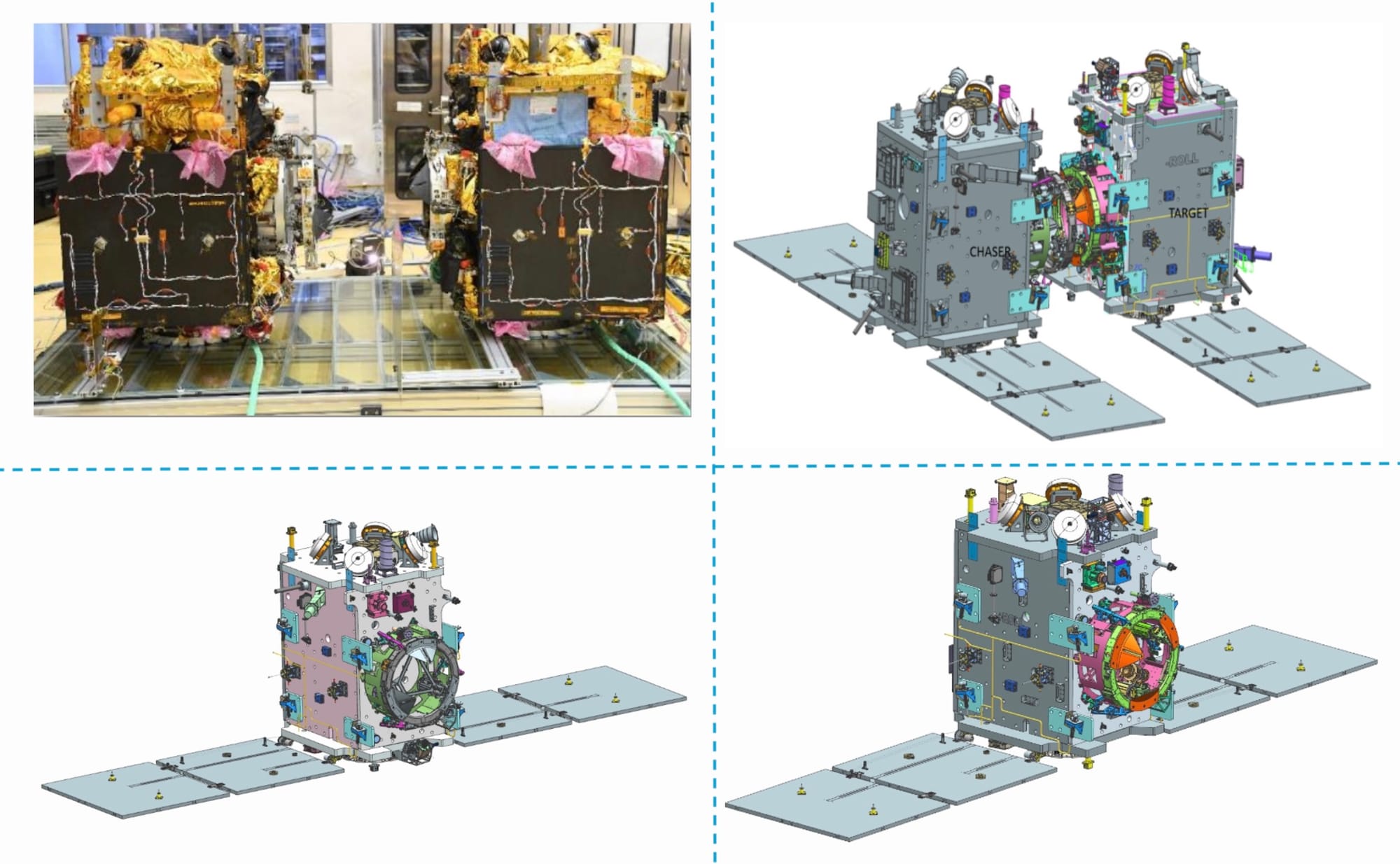
- On April 20, ISRO successfully docked the twin SPADEX (space docking experiment) satellites for the second time, this time with better precision and control while also demonstrating power transfer between the satellites unlike the last time. ISRO is using the $14 million mission—sans the launch cost—and its two upcoming namesake successors as practice before the agency can launch and execute the complex Chandrayaan 4 spacecraft stack meant to bring samples from the Moon. Chandrayaan 4 will feature multiple large robotic modules that dock remotely in Earth as well as lunar orbit, the latter being a feat only China has achieved so far with its Chang’e 5 and Chang’e 6 sample return missions. SPADEX is also reducing risk for the upcoming set of Gaganyaan human spaceflights—especially so for two end-of-decade planned cargo flights, one to the International Space Station and one to India’s first space station module. The first SPADEX mission will continue docking and undocking attempts under varied conditions to maximize learning value and help master this technology key to many ambitions in space.
- After ISRO’s latest navigation satellite NVS-02 failed earlier this year, leaving India’s NavIC navigation constellation of a handful of satellites operating below expected performance levels, ISRO’s Chief V. Narayanan told the media that “we will be raising the [NVS-02 satellite’s] orbit using the thrusters with the available propellant. The satellite’s condition is healthy.” In a later interview with Chethan Kumar of the Times of India, the ISRO Chief went back on that plan. As such, the $35 million NVS-02 satellite–without the launch cost—will unfortunately certainly not reach its final inclined geosynchronous orbit (IGSO), leaving its utility limited to testing a handful of new technologies onboard. It’s a setback for the NavIC program.
An Indian to the ISS

- Having completed planned astronaut training, India’s Shubhanshu Shukla will fly to the International Space Station (ISS) on May 29 through the Ax-4 Axiom Space mission aboard a SpaceX Crew Dragon capsule as Mission Pilot. As part of the 14-day mission arranged under a NASA-ISRO partnership, ISRO and Shukla will conduct seven out of sixty experiments aboard Ax-4. As part of a broader ISRO-ESA agreement, Indian institutes will conduct two joint microgravity experiments with ESA. Chethan Kumar reported the ISS mission’s cost to ISRO being at least $68 million. ISRO seeks to leverage this experience into India’s ambition to indigenously send humans to Earth orbit. The next major milestone to enable that end is Gaganyaan G1, the first of three uncrewed test flights required to be successful before ISRO deems all systems being safe enough to launch astronauts. ISRO is targeting G1’s launch later this year although timelines have been uncertain until now.
- Chethan Kumar made a compelling case for the Indian government and ISRO to let astronaut elects engage with the public instead of barring them from the same.
- In the meanwhile, ISRO continues testing Gaganyaan crew capsule parachutes on rail sleds, with the latest test simulating simultaneous firing of two drogue chutes in a way that mimics their deployment during the steepest atmospheric descent expected of the crew capsule.
Continuing Chandrayaan
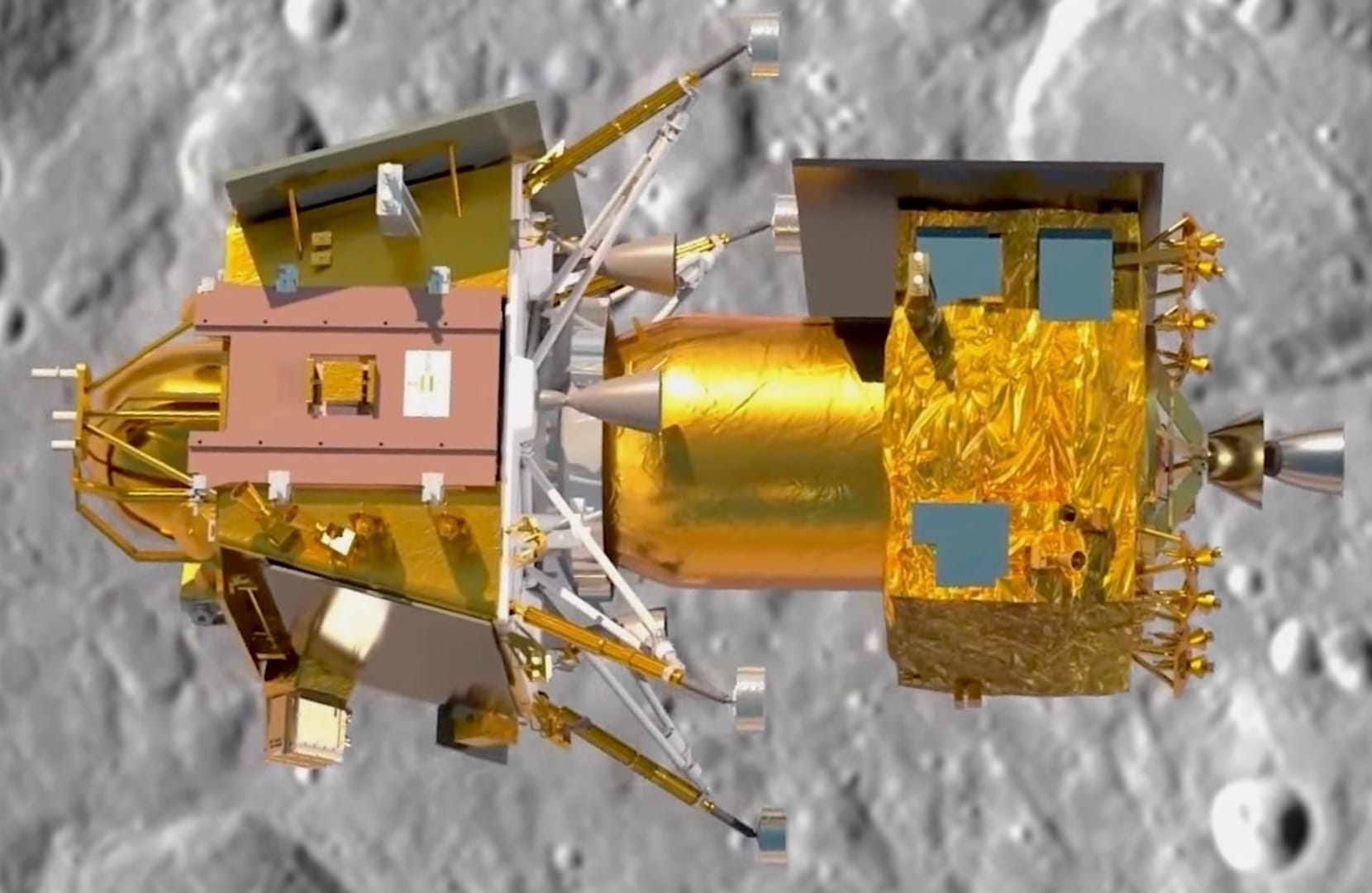
- India approved the joint ISRO-JAXA Chandrayaan 5 / LUPEX mission to drill and analyze water ice on the Moon. I’ve collated, contextualized, and linked to every mission specific we know of. I also explain how Chandrayaan 5 LUPEX will be a giant leap for ISRO and JAXA, and how it can provide NASA with data critical for Artemis planning:
- The Chandrayaan 2 orbiter has helped produce a galore of lunar science results recently.
- Chandrayaan 3’s thermal probe experiment will benefit future missions eyeing lunar water
- On April 16, ISRO gathered about 50 scientists from across India to deliberate on and help determine next steps for storage and scientific studies of lunar samples to be brought to Earth by India’s upcoming Chandrayaan 4 mission.
Many thanks to the Takshashila Institution, PierSight and Gurbir Singh for sponsoring this month’s Indian Space Progress edition. If you too appreciate my efforts to capture true trajectories of Indian space, support my independent writing. 🚀
Private and commercial space updates
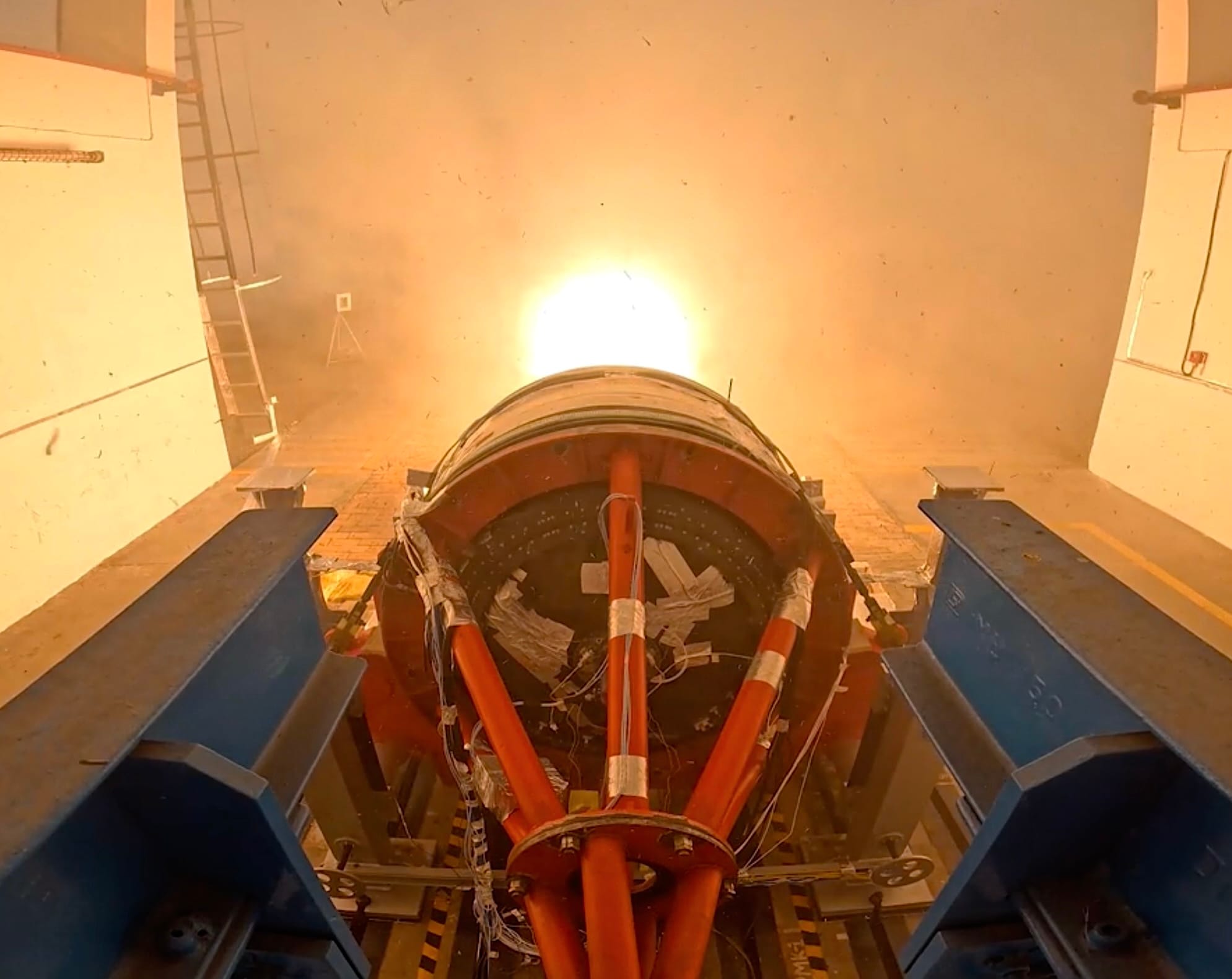
- Hyderabad-based Skyroot test fired the third and fourth stage engines of its upcoming Vikram-I rocket targeted for an orbital test launch sometime next year. The company also tested actuators of Vikram-I’s first stage engine nozzle. Other recent Vikram-I milestones include proof pressure testing all three stages of Vikram-I, flight qualifying the Raman-I engine which will provide roll attitude control, and test firing the rocket’s second stage motor. Unfortunately, despite these advances, Skyroot and its Indian competitor Agnikul face an uphill battle to survive and be profitable this decade, facing competition from ISRO’s own nimble SSLV rocket. A lot will ride on the first orbital demonstration going well for Skyroot.
- The Indian government through IN-SPACe has launched a ~$57 million “Technology Adoption Fund” to encourage the private sector to develop and manufacture space components that can help India reduce its reliance on foreign imports while commercializing them. These funds will be on a co-investment basis. The move follows a separate pool of $120 million in venture capital funding that the Indian government announced last year, which industry experts are cautiously optimistic about.
- After conducting their first orbital demonstration of edge-computing-based smart Earth imaging last year, Bengaluru- and Cupertino-based SkyServe recently tested NASA JPL’s AI models in space through their software platform on a partner satellite.
- Bengaluru-based Bellatrix Aerospace is creating a US subsidiary to better position the sales of their green propulsion systems. So far, the company has tested several small demonstrators in space.
- HEX20 launched the “Nila” demonstrator CubeSat on March 15.
- Kolkata-based Sisir Radar raised $1.5 million in seed funding to develop and launch the world’s highest resolution L-band SAR satellite later this decade.
More rocket tech investments from ISRO
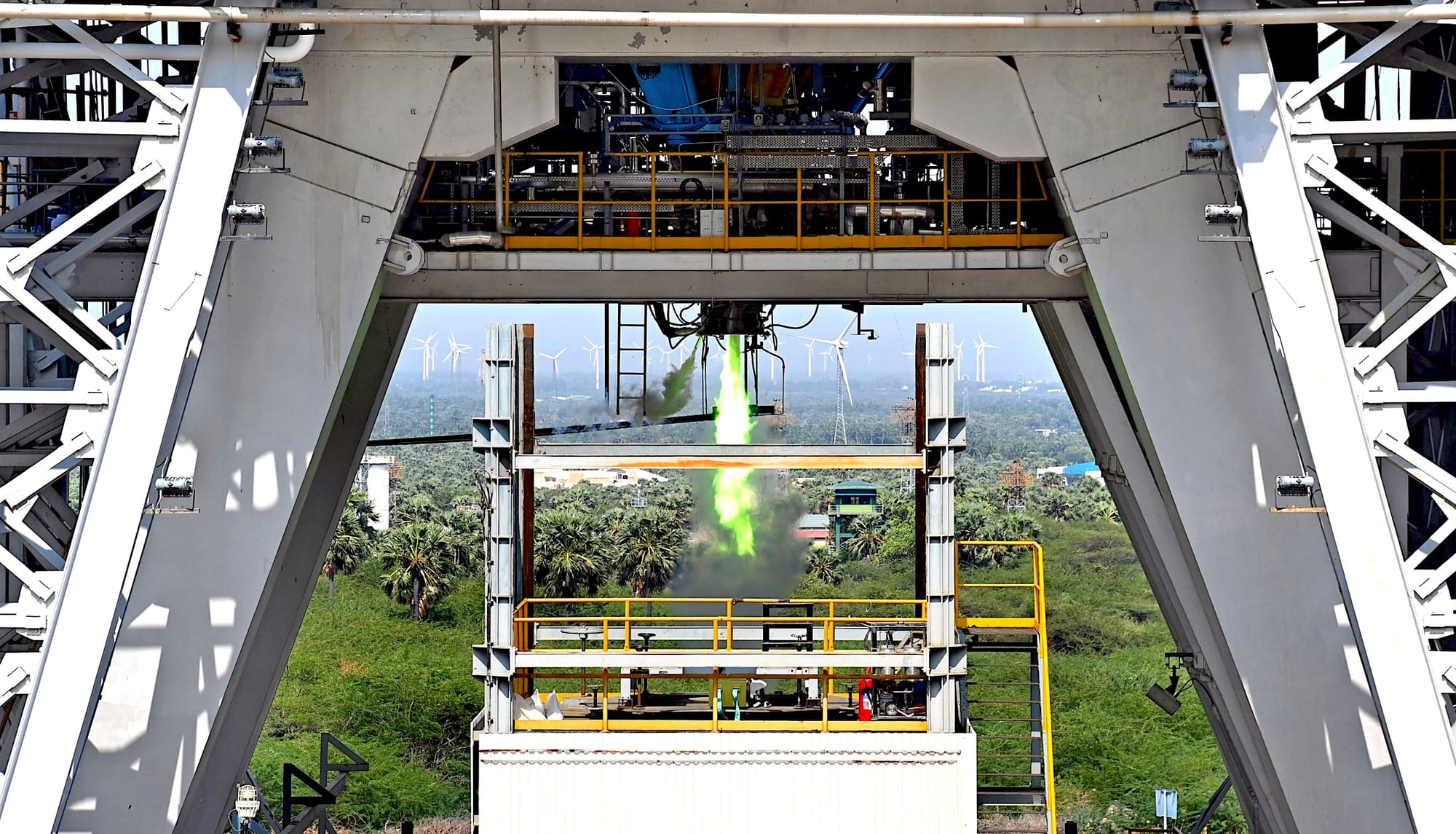
Producing rocket engines and stages involves complex pipelines. ISRO has continued investments in optimizing the performance and production of parts of its family of rockets, with this year seeing some notable advances.
- Over a year later than expected, ISRO has finally made headway into testing its upcoming semi-cryogenic kerolox engine. Many more milestones remain before ISRO can integrate the engine into the Launch Vehicle Mark III (LVM3), India’s most powerful rocket. The engine will increase LVM3’s mass to GTO orbit lifting capacity from ~4,000 kilograms to ~5,000.
- In the meanwhile, ISRO is increasing the delivery rate of its upper stage cryogenic engines and stages for operational missions of LVM3. This is part of the agency’s efforts to increase the production capacity of the rocket from the currently two a year to four and then six. Moreover, with successful ignition trials, ISRO is also progressing on having engine restart capability on LVM3’s upper stage, which will allow more complex satellite deployments.
- Relatedly, the recently-approved heavy-lift NGLV rocket—which will succeed the LVM3 next decade—will also have engine restart capabilities. This will the case for its booster for returning to Earth for launch reuse, and so for its upper stages to perform complex orbital maneuvers and deployments.
- Efforts continue to approach near-100% self-sufficiency in India’s building of its rockets, with the latest addition and modernization coming in the form of a 32-bit microprocessor.
- Solid rocket motors are a staple element across ISRO’s entire rocket family. ISRO’s pace of producing them is also getting a boost thanks to the realization and operational availability of the world’s largest solid propellent mixer.
- ISRO successfully fired its 300-millinewton Xenon-based electric plasma propulsion system for a long duration to qualify it for use on an upcoming test satellite. These engines will save mass on heavy geostationary satellites, allowing increase in performance of their other systems like communications. Electric propulsion also has applications for deep space planetary exploration as was utilized by NASA’s Dawn mission to explore the asteroid belt.
- ISRO inaugurated a modern landing gear facility at its Vikram Sarabhai Space Centre (VSSC) campus to comprehensively test and qualify landing legs and associated systems for its upcoming reusable spaceplane.
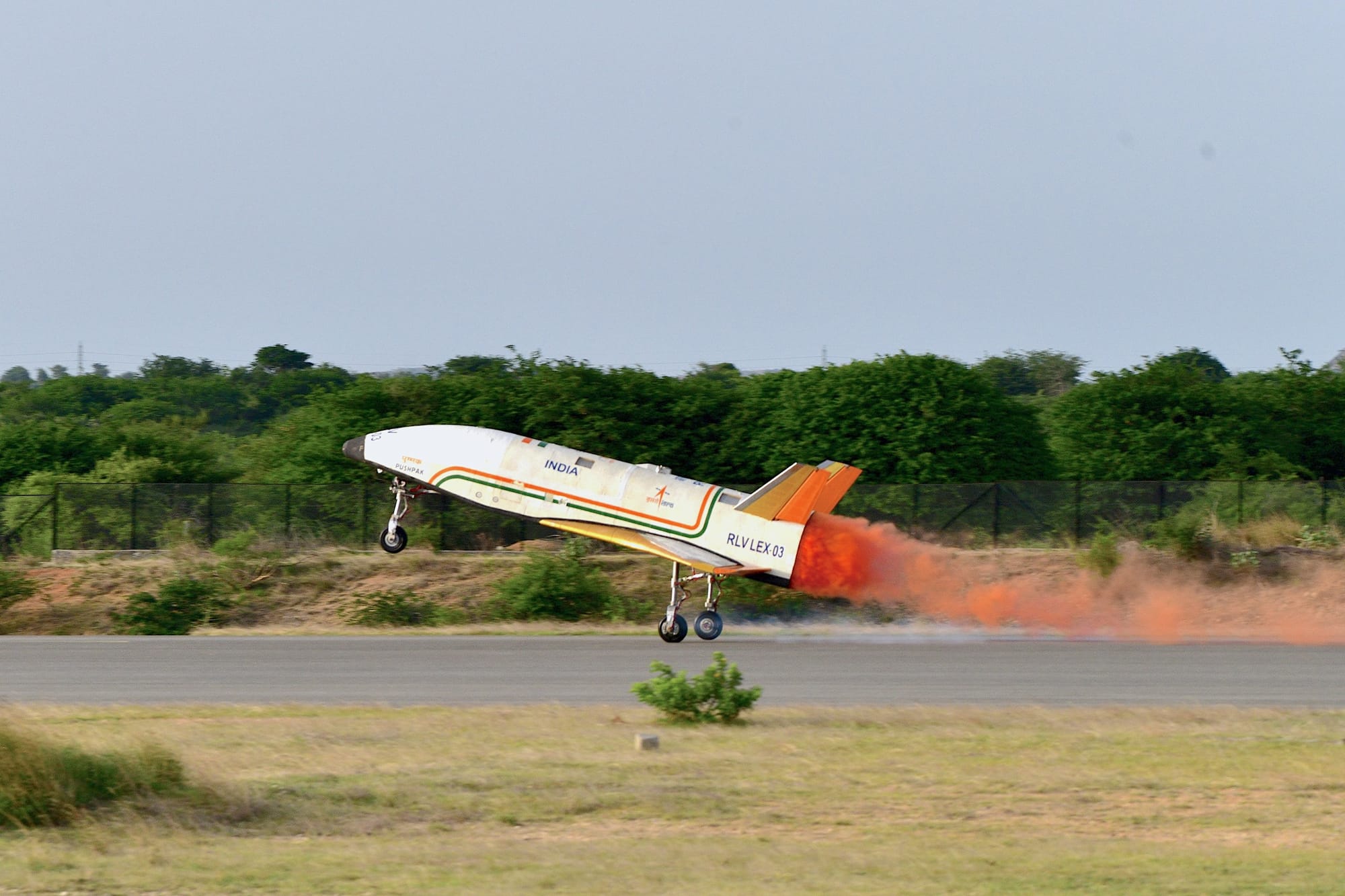
More Indian space
- Former ISRO Chief K. Kasturirangan passed away on April 25. His numerous contributions to India’s space program span astrophysics, Earth observation and communications satellites, operationalization of the PSLV rocket, the first GLSV flight test, and laying the foundations for India’s first planetary mission and space telescope with Chandrayaan 1 and AstroSat respectively.
- India’s newest space-based telescopes Aditya-L1 and XPoSat continue observing solar explosions and cosmic bursts respectively. It was in January that ISRO released the first datasets from Aditya-L1’s observations at the agency’s ISSDC and PRADAN portals. XPoSat data is not available the same way yet but will come online later this year on its ISSDC page.
- Related: ISRO’s plan to study Venus alongside NASA and ESA
- Cool new space projects approved while budgets stay the same..
